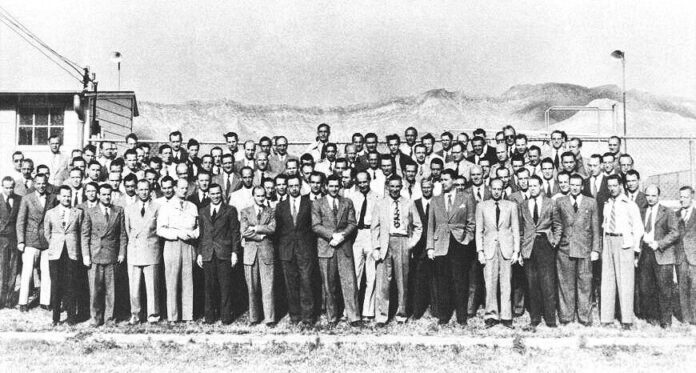In the aftermath of World War II, as Europe lay in ruins and the horrors of the Nazi regime came to light, the world’s focus shifted from the battlefield to a new, invisible front: the Cold War. For the United States and the Soviet Union, dominance in science, technology, and space exploration became paramount. In this shadowy struggle, the U.S. launched Operation Paperclip, a secretive program to recruit German scientists—many of whom had worked for the Nazi regime—to bolster America’s technological and military capabilities.
This controversial operation blurred the lines between morality and pragmatism, raising questions that linger to this day. Who were these scientists? What role did they play in Nazi atrocities? And why did the U.S. prioritize their expertise over justice?
The Seeds of Operation Paperclip
As World War II neared its end, the Allied forces discovered the extent of Nazi Germany’s technological advancements. From the V-2 rockets—the first long-range guided ballistic missiles—to cutting-edge research in aeronautics, medicine, and chemical engineering, it was clear that German science had made significant leaps.
The U.S. military recognized an opportunity: by bringing Germany’s top scientists to America, they could prevent this expertise from falling into Soviet hands. In 1945, the Joint Intelligence Objectives Agency (JIOA) was tasked with identifying and recruiting these individuals. The program was later codenamed Operation Paperclip, a reference to the paperclips used to attach new, sanitized biographies to the scientists’ files, concealing their Nazi affiliations.
The Recruitment of Nazi Scientists
The scope of Operation Paperclip was vast. Over 1,600 German scientists, engineers, and technicians were brought to the United States between 1945 and 1959. Many of them had been members of the Nazi Party or had worked directly under the regime’s military projects.
One of the most famous recruits was Wernher von Braun, a pioneering rocket scientist who had developed the V-2 rocket used to bomb London during the war. Von Braun’s team became instrumental in America’s space program, ultimately leading to the creation of the Saturn V rocket, which carried astronauts to the moon during the Apollo missions.
Other notable figures included:
- Kurt Debus, a rocket engineer who became the first director of NASA’s Kennedy Space Center.
- Hubertus Strughold, a physician whose research in aeromedical science earned him the title “Father of Space Medicine,” despite allegations of involvement in unethical experiments on concentration camp prisoners.
A Moral Dilemma
The recruitment of Nazi scientists sparked significant ethical debate. Many of these individuals had been complicit in or directly involved with war crimes. For instance, the V-2 rockets developed by von Braun’s team were assembled using forced labor from concentration camp prisoners, thousands of whom died under horrific conditions.
To justify the program, U.S. officials argued that recruiting these scientists was a matter of national security. The Soviet Union was conducting a similar operation, known as Operation Osoaviakhim, and had already seized hundreds of German scientists. The Cold War mentality dictated that the U.S. could not afford to fall behind in the arms and space races.
However, this pragmatism came at a cost. The U.S. government went to great lengths to obscure the Nazi pasts of many Operation Paperclip recruits, shielding them from accountability. This decision sparked outrage among Holocaust survivors, human rights advocates, and even some members of the U.S. military.
The Legacy of Operation Paperclip
Operation Paperclip played a crucial role in shaping the technological and military landscape of the 20th century. The contributions of these German scientists were pivotal in advancing the U.S. space program, missile technology, and Cold War military strategies.
Yet, the operation remains deeply controversial. It raises uncomfortable questions about the ethics of prioritizing technological advancement over justice. By integrating individuals with ties to atrocities into American institutions, Operation Paperclip forced the world to confront the uneasy balance between morality and pragmatism.
Today, the legacy of Operation Paperclip is visible in every satellite launched, every space mission completed, and every scientific breakthrough achieved in the decades following World War II. But behind these achievements lies a story of compromise, secrecy, and the enduring complexity of human ethics.




